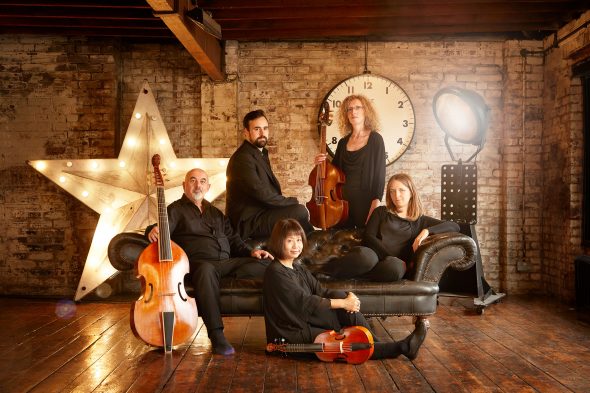
 United Kingdom William Byrd Festival [2] – Byrd and Weelkes: Fretwork, Temple Church, London, 30.6.2023. (MB)
United Kingdom William Byrd Festival [2] – Byrd and Weelkes: Fretwork, Temple Church, London, 30.6.2023. (MB)

Byrd – Pavan and Gaillard; Fantasy in 6 parts; Three Fantasies in 3 parts; Fantasy in four parts; Five-Part Pavan; Browning; Two In Nomines in 5 parts; Prelude and Ground; Fantasy: two parts in one the fourth above; Fantasy in six parts
Weelkes – In Nomine in 5 parts; Fantasy in six parts
Fretwork – Richard Boothby, Emilia Benjamin, Jonathan Rees, Joanna Levine, Sam Stadlen and Emily Ashton
Temple Music’s William Byrd Festival continued with music for viol consort: mostly Byrd, but with a couple of pieces by Thomas Weelkes. The twin variety and unity of Byrd’s contributions was striking, in some cases gradually permitting the emergence of older themes, whether from folk music or, in the case of the In nomines, a cantus firmus from John Taverner’s Missa gloria tibi trinitas. A programme equally well constructed and well performed, with subtle yet undeniable mastery, offered a restorative lunchtime hour in the heart of legal London.
A pair of dances, a Pavan and Gaillard, made for an inviting opening, typical of Byrd’s deft combination here of depth and lightness of touch, the second dance related, consequent, yet also quite different, quicker and livelier, though never rushed. Three three-part fantasias followed, shared between the six players. The textural difference was obvious, but they were also softer in mood, especially the first, since there was once more considerable variation to be heard in work and performance. The Fantasy in four parts was wistful, though never morose; always, it moved, beguiled, and enriched, a twin emotional and intellectual treat. A Five-part Pavan seemed at its opening – however sentimental it may be to say so – to reach forward, via William Lawes and Matthew Locke, to the final flowering of English consort music in Purcell. Not that it was not characteristic, but future potentiality also seemed present. Ever dancing, it was yet never quite the same. Browning, overtly based on a folk song, proved as variegated as it was catchy.
A fine pairing of In Nomines followed: the first intimate, yet powerfully, even searingly dissonant; the second offering both complement and contrast. Weelkes’s contribution also had its dissonance, voiced in a different, yet related voice, almost as if it and its predecessor had formed part of a series with the first. The ensemble still numbering five, Byrd’s Prelude and Ground brought another element of contrapuntal technique and expression to the fore, as throughout enlivening rather than didactic, illustrative of a seemingly endless capacity for variation. The fantasia two parts in one the fourth above sounded as if an exemplar of Byrd and his players’ ability to shape a work with mastery and apparent effortlessness so as to sound ‘natural’ in conception: full of incident, yet with an unquestionable sense and shape of the whole.
To conclude, we returned to six-part fantasias by both composers, Byrd’s surely the deeper of the two. Its entire passage, of increasing metrical variety, emerged as if founded on the presence of something darkly melancholic, part acknowledged and part shrouded in mystery: perhaps not the worst metaphor for the concert as a whole.
Mark Berry
